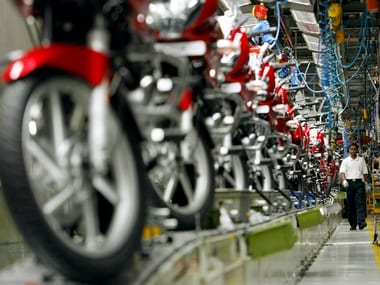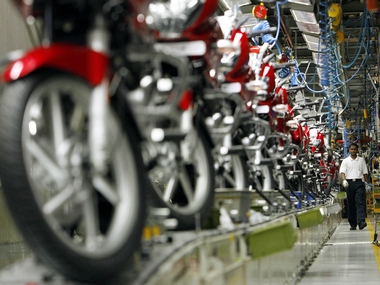A stormy meeting over framing norms for ‘quadricycles’ today saw no consensus among various automobile manufacturers. Bajaj Auto has been keen to bring a quardicycle ‘RE60’ but others such as Tata Motors and TVS Motor Company have been opposing the move, saying quadricycles should follow the same safety norms which are applicable for passenger cars.
The divide between industry has become so sharp now that no consensus could be reached at the meeting which was attended by representatives of Bajaj, Tata Motors, Maruti Suzuki India, TVS, component makers such as Bosch and Wamco and a representative of the Society of Indian Automobile Manufacturers.
[caption id=“attachment_789173” align=“alignright” width=“380”]  Bajaj Auto has been keen to bring a quardicycle ‘RE60’ but others such as Tata Motors and TVS Motor Company have been opposing the move. Reuters[/caption]
Given the widening divide between automobile manufacturers, the Government has decided to form an inter-ministerial group to frame norms for quadricycles and this group willobviouslyhave no participation from industry. This IMG would be headed by Transport Secretary Vijay Chhibber. Members are Joint Secretary (Transport) in the Ministry of Road Transport and Highways Sanjay Bandopadhyay, Secretary of Heavy Industries Sutanu Behuria, Director of the International Centre for Automotive Technology Dinesh Tyagi and Director of ARAI Shrikant Marathe.
So the group represents concerned ministries, automotive testing and homologation experts who can also opine on safety guidelines.
Bajaj Auto Managing Director Rajiv Bajaj told Firstpost an IMG has been formed without industry participation to hasten a decision on this new vehicle category. CNBC TV 18 rpeorted on Monday that a panel, headed by ICAT’s Tyagi, has already submitted a report in which it has proposed a phased alignment with the norms for quadricycles which are prevalent in the European Union.
Impact Shorts
More ShortsThe Tyagi committee has proposed a two phase approach to align Indian standards with those of the European standards, CNBC TV 18 said. In the first phase, the committee has proposed that the maximum weight of these vehicles should not exceed approximately 700 kilograms. In the second phase they want the maximum weight to be brought down to 450 kilograms which is in fact inl ine with the European standards.
The other key recommendations include top speed limit of 70 kilometres an hour and no-entry on highways.
Vehicle weight is key in determining: vehicle speed (and therefore safety norms), fuel consumption and emissions. Bajaj Auto has been saying that that any norms on quadricycles should cap the vechile weight at 450 kg.
If allowed, quadricycles could well change the landscape of urban and semi-rural commuting in India. This four-wheeler is usually less than half the weight of a small car, can muster up just about a tenth of a car’s horse power and has a maximum top speed of anywhere between 70-80 km an hour compared to a car’s top speed of up to 200 km. In comparison to three-wheelers though, its top speed and horse power are both higher.
Quadricycles can offer a safer, more comfortable four-wheeled option with doors and seat belts for intra city commute. Three-wheelers do not have either doors or seat belts.
Tata Motors and some others have been lobbying against quadricycles being categorised separately from cars by insisting that safety measures such as crash tests etc are made mandatory for such vehicles. Car makers fear that their cars in the commercial segment as taxis would suffer if quadricycles are allowed; some three-wheeler makers are keen that the formulation of norms for quadricycles should be delayed by three-four years so they get adequate time to prepare themselves to enter this space.
Car makers perhaps fear that their cars in the commercial segment as taxis would suffer if quadricycles are allowed; even semi-urban and rural transport options such as light commercial vehicles (example Tata Ace) and vikrams used at present may get affected.
A quadricycle, if allowed in its present form of about 400 kg weight and maximum power of 20 horse power, could well be priced somewhere in between a two-wheeler and the Tata Nano and Maruti Alto.


)

)
)
)
)
)
)
)
)



